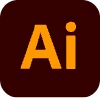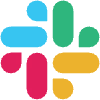SaaS Website Design
Starting at
$
50
/hrAbout this service
Summary
What's included
Sprint Timeline
This is an essential part of the project. A regular sprint ensures that every team member and all stakeholders are on the same page. It helps to uncover oversights that may have fallen through the cracks. It's also essential for team bonding. A weekly design sprints where we go over the project with the team of project manager, dev team, engineers, testers and other stakeholder. The timeline is tentative because of the scope of the project, as some projects would require more ideation than other till we arrive at an MVP. Week 1: We discuss the product goals and share ideas of the product direction and review the mood board. Week 2: We review wireframe and propose any edits or tweaks. Finalise the wireframe to move on to mockup Week 3: Additional reviews and feedbacks. Final design hand-off.
Design Mood Board
I create mood boards to ensure that my design approach is on the same page with the client's ideas with regards the general look and feel of the product. This will include things like logos, typography, color palettes, images, sketches, and other design assets. The use of this is to give clients and other stakeholders an idea of the direction the design is going to take and also helps greatly with feedbacks.
Wireframe
This is closely similar to design mood board but here additional functionalities are included such as prototyping. I use this for collaborating with software developers as I ensure to can get them acquainted with how the product is going to work and look while they estimate time and specifics of the development phase, and give recommendations according to technical requirements and future product capabilities.
Type Systems
The type system defines things like the typefaces, font sizes, weight, line height, and letter spacing the design will use. It helps greatly with typography hierarchy.
Design System
Design systems can include design patterns, best practices, code snippets, style guides, design resources, and non-tangible things like brand values, mindsets, and beliefs. I frequently use Google's Material Design System but always consider whether the design I'm creating would benefit from an existing, recognizable design system or not.
Mockup
These are full-size models of devices showing how the designs will look in real life. They can help developers assess the functionality of the design, as well as the visual appeal. Mockups can also be used for showing stakeholders the design before it’s handed off to developers. They can also be used for user testing.
Design Handoff
A design handoff document that includes mockups, interactions, copy, accessibility validations, specs, and assets necessary for a dev team to release the product or product updates. Ideally, I always consult with developers during the design process to make sure the assets I hand off can be implemented, particularly within the timeframe and budget of the project.
Skills and tools
Graphic Designer
UX Designer
Product Designer

Adobe Illustrator

Adobe Photoshop

Figma

Google Docs

Slack
